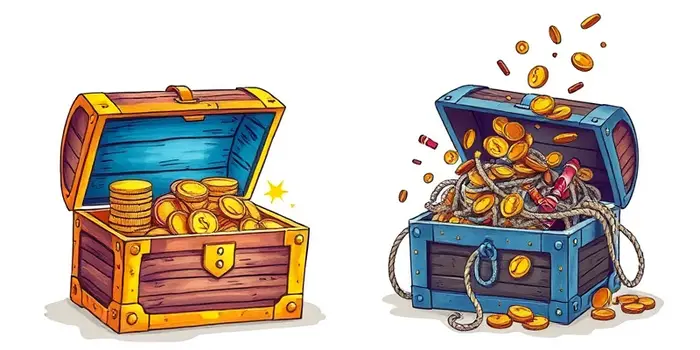
Financial habits shape our emotional well-being and affect relationships, health, and daily life. While saving provides stability, hoarding can lead to stress and dysfunction. Recognizing the difference empowers us to manage resources wisely and live with greater fulfillment.
In simple terms, rational, intentional behavior aimed at future needs is saving. It involves setting aside money or resources for emergencies, retirement, education, or large planned purchases. Savers define clear goals, track progress, and adjust plans when circumstances evolve.
By contrast, hoarding is marked by an emotional, often compulsive inability to let go of money or possessions. Hoarders accumulate without practical purpose, driven by persistent fear and anxiety. This behavior often lacks conscious organization or a realistic plan for use.
Saving behaviors promote feelings of security and patience. When savers meet milestones, they experience confidence and relief. They can also offer support and generosity to loved ones or causes, reinforcing a sense of community and purpose.
Hoarding, however, springs from deep vulnerabilities. It may relate to past trauma, loss, or chronic anxiety disorders such as OCD or depression. The prospect of spending or sharing resources can trigger acute panic, leading to avoidance and isolation.
Clinically, hoarding disorder is recognized in the DSM-5. It often co-occurs with mood disorders, and untreated symptoms can impair work, social connections, and overall quality of life.
Healthy saving and harmful hoarding reveal themselves through distinct behaviors. The following table outlines core contrasts:
These contrasts can serve as a guide for self-reflection or for offering support to friends and family.
Hoarding behaviors often trace back to early experiences of scarcity or trauma. Childhood deprivation, sudden losses, or unstable home environments can instill a persistent fear of not having enough.
Cultural messages also play a role. In societies that equate thrift with virtue, individuals may internalize the idea that saving excessively is always beneficial, without considering personal goals or needs.
Work-related stress, economic uncertainty, and personality traits like perfectionism or risk aversion can intensify saving until it borders on hoarding. Recognizing these triggers helps in crafting healthier financial habits.
Most cultures celebrate saving as a form of prudence and foresight. Parents teach children to save coins, communities rally for collective funds, and financial literacy programs emphasize the importance of building an emergency fund.
Yet excessive saving without clear purpose may arouse concern. Community members may perceive such behavior as stinginess or emotional withdrawal. Cultural norms around generosity and hospitality can clash with extreme frugality.
In some anthropological contexts, hoarding appears as a survival strategy in times of conflict or famine. However, in modern stable societies, it is often viewed as irrational when resources are abundant but unused.
Many philosophical and religious traditions draw a line between healthy stewardship and selfish hoarding. For example, certain interpretations of Christian stewardship praise saving for future service but caution against amassing wealth without sharing.
Similar values appear in Buddhist teachings on nonattachment, urging individuals to let go of excess possessions that cloud compassion. Ethical frameworks across cultures encourage balance between preparing and giving, fostering community care without self-neglect.
Hoarding disorder is formally recognized in the DSM-5 and may co-occur with obsessive-compulsive disorder, major depression, or generalized anxiety. Individuals often report intense distress at the thought of discarding items or using funds.
Research indicates that up to 50% of people with hoarding behaviors have a history of trauma or loss. Left untreated, these patterns can lead to severe social withdrawal, financial crises, and even self-neglect.
Early identification and integrated care—combining financial counseling with cognitive-behavioral therapy—can significantly reduce symptoms and restore daily functioning.
Consider a household earning approximately ₹4 lakh per month, jubilantly saving nearly 90% of income. On the surface, this extraordinary rate appears commendable. However, the couple lacked clear goals for their mounting balance.
The spouse began to question the emotional impact: Was their extreme saving serving any practical or relational benefit? Despite substantial assets, the family avoided vacations, charitable gifts, or even minor home improvements. Saving had become an end in itself.
This case illustrates how excessive, purposeless saving veers into unhealthy territory. Without defined objectives or allowances for enjoyment, the act of saving lost its intended value, turning into a barrier to well-being.
Identifying these red flags early offers an opportunity for positive intervention and support.
Balancing security with flexibility ensures resources empower rather than restrict you. Implement these strategies:
By setting specific financial goals for yourself, you channel resources toward meaningful outcomes. A designated “fun fund” or charity allocation prevents burnout and fosters life satisfaction. Tracking tools and accountability partners can also maintain healthy momentum.
If saving habits become overwhelming or hoarding behaviors impair daily functioning, consider professional guidance. Financial counselors can assist with budgeting techniques and realistic goal-setting.
Mental health professionals address underlying anxiety, trauma, or obsessive tendencies. Cognitive behavioral therapy and specialized hoarding treatment programs have proven effective in restoring balance and comfort.
Engaging with peer support groups or online forums offers shared experiences and strategies. Books on personal finance, emotional well-being, and decluttering can provide further guidance and inspiration.
Both saving and hoarding originate from a desire for security, but their outcomes differ sharply. Mindful accumulation geared toward goals enriches life, while unchecked hoarding breeds anxiety and alienation.
Embrace saving as a tool: define objectives, monitor progress, and allow for occasional rewards. By weaving generosity and flexibility into your financial plan, you cultivate resilience, joy, and genuine well-being—now and in the future.
References













